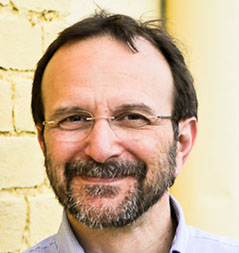TWiV revisits Brazil’s rejection of Sputnik vaccine, examines influenza transmission via the air from the nasal epithelium of ferrets, and a history of accidental releases of polioviruses and their relevance for eradication of poliomyelitis.
In COVID-19 clinical update #61, Daniel Griffin reviews a modeling of future hospitalizations and deaths by vaccination rates and non pharmaceutical intervention scenarios, performance evaluation of rapid antigen tests, children making up a growing share of new cases, antibody response to mRNA vaccine in solid organ transplant recipients, and outcomes in hospitalized patients treated with tocilizumab.
TWiV examines the claim by Brazil’s ANVISA that the Sputnik vaccine contains replication-competent adenovirus, and a role for the furin cleavage site in SARS-CoV-2 spike for efficient reproduction in the respiratory tract, evasion of antiviral IFITM proteins, and transmission in ferrets.
The TWiVmeisters discuss how copy-back defective viral genomes might modulate the clinical outcome of respiratory syncytial virus infection, and detection of antibodies to henipa- and filo-like viruses in Trinidad bats.
In COVID-19 clinical update #60, Daniel Griffin summarizes CDC guidance for summer camps, how to protect yourself when fully vaccinated, updated recommendation for J&J vaccine, declining global case fatality rate, and characterization of post-acute sequelae.
The TWiVsters explain how the shape of pleomorphic virus particles – spherical or filamentous – determines the probability of virus attachment and fusion, and resistance to selective pressure such as antibodies that block cell entry.
TWiV reviews a drug screen for inhibitors of syncytium formation, the fusing of cells caused by SARS-CoV-2, which reveals that the process is regulated by a calcium-activated ion channel and scramblase that is inhibited by the anti-parasite drug Niclosamide.
In COVID-19 clinical update #57, Daniel Griffin covers children and MIS-C, school opening plans, transmission event with masks, fomite transmission, diagnostic test performance, AZ vaccine and blood clots, and long COVID and the effect of vaccines.
Arturo Casadevall joins TWiV to discuss the use of convalescent plasma to treat COVID-19, including a history of the process, how plasma is prepared and tested, why it is difficult to conduct randomized clinical trials, how this treatment has fared and his hopes for the future.
In COVID-19 clinical update #56, Daniel Griffin notes increasing hospitalization in children and young adults, Pfizer vaccine efficacy results in 12-15 year olds, rapid self administered nucleic acid and antigen tests, mRNA vaccine efficacy in real world conditions, and improvement of long COVID after vaccination.








